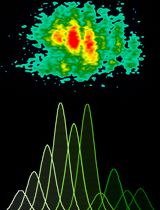- 提交稿件
- 订阅
- CN
- EN - English
- CN - 中文
- EN - English
- CN - 中文
Analysis of Phagosomal Antigen Degradation by Flow Organellocytometry
采用流式细胞器细胞术分析噬菌体抗原降解
发布: 2016年11月20日第6卷第22期 DOI: 10.21769/BioProtoc.2014 浏览次数: 8602

相关实验方案

使用康可藻红素刺激冷冻保存的猪外周单个核细胞进行增殖检测,并结合FCS ExpressTM 7.18软件分析
Marlene Bravo-Parra [...] Luis G. Giménez-Lirola
2025年06月05日 1600 阅读
Abstract
Professional phagocytes internalize self and non-self particles by phagocytosis to initiate innate immune responses. After internalization, the formed phagosome matures through fusion and fission events with endosomes and lysosomes to obtain a more acidic, oxidative and hydrolytic environment for the degradation of its cargo. Interestingly, phagosome maturation kinetics differ between cell types and cell activation states. This protocol allows to quantify phagosome maturation kinetics on a single organelle level in different types of phagocytes using flow cytometry. Here, ovalbumin (OVA)-coupled particles are used as phagocytosis model system in dendritic cells (DC), which are internalized by phagocytosis. After different time points, phagosome maturation parameters, such as phagosomal degradation of OVA and acquisition of lysosomal proteins (like LAMP-1), can be measured simultaneously in a highly quantitative manner by flow organellocytometry. These read-outs can be correlated to other phagosomal functions, for example antigen degradation, processing and loading in DC.
Background
In innate immunity, professional phagocytes such as dendritic cells (DC), macrophages and neutrophils recognize and internalize different types of particles by phagocytosis including pathogens and dead cells (Flannagan et al., 2012). Intra-phagosomal degradation of these particles by fission and fusion events with endosomal and lysosomal compartments allow either clearance and complete destruction of phagosomal cargo or partial degradation and processing of phagosomal antigens for presentation to T lymphocytes. Different parameters of phagosome maturation, such as acidification, oxidation and proteolysis, dictate phagosomal fate and influence the initiation of different immune responses (Kinchen and Ravichandran, 2008). In particular, the type of involved phagocytes, specific recognition of pathogen-associated molecular patterns (such as LPS) or danger-associated molecular patterns (such as HMGB1) on the surface of the particle as well as the influence of cellular and phagosomal signal transduction determine strength and duration of phagosomal antigen degradation (Savina and Amigorena, 2007).
This protocol was developed to follow antigen degradation kinetics on the single phagosome level in a highly quantitative fashion by flow organellocytometry. It is based on a method previously published by our lab using antigen-coupled polystyrene beads as phagocytosis model system (Savina et al., 2010). Due to their physical properties, bead-containing phagosomes can be distinguished from other cell organelles of similar size during flow cytometry. Therefore, phagosomal antigen degradation can be measured directly without previous organelle fractionation and purification methods. Another major advantage of this protocol over many other protocols is the fact that it allows to distinguish between internalized beads within phagosomes and particles bound on the outside of the cell, which were not phagocytosed. This protocol was used previously for the characterization of phagosomal antigen degradation in bone marrow-derived DC (BMDC) (Hoffmann et al., 2012; Alloatti et al., 2015) as well as in splenic DC (Alloatti et al., 2015). However, other phagocyte types and different antigen sources can be used as well for the investigation of antigen degradation kinetics in phagosomes. The approach described below is adapted to BMDC and ovalbumin (OVA)-coupled particles as phagosomal cargo.
Materials and Reagents
Note: The entire method is performed with sterile pyrogen-free dishes and plates, pipettes, tips, microfuge and conical tubes. All media and buffers need to be filtered through 0.22 μm filters.
- Petri dish, 145 x 20 mm (Greiner Bio One, catalog number: 639161 )
- 2 ml tubes
- 15 ml centrifuge tube
- U-bottom 96-well storage plate (Corning, Falcon®, catalog number: 353077 )
- V-bottom 96-well storage plate (Corning, Falcon®, catalog number: 353263 )
- 2 ml sterile syringe (Henke Sass Wolf, catalog number: 4020.000V0 )
- 22 G sterile needle, 0.7 x 40 mm (Terumo Europe, catalog number: NN-2238R )
- Mice: C57BL/6J (Janvier Labs)
- Particles: amine-modified polystyrene microspheres, 3 μm diameter (Polysciences, catalog number: 17145-5 )
- Dulbecco’s phosphate-buffered saline, no calcium, no magnesium (DPBS) (Thermo Fisher Scientific, GibicoTM, catalog number: 14190094 )
- Glutaraldehyde, 25% (vol/vol), EM grade (Electron Microscopy Sciences, catalog number: 16220 )
- Low endotoxin ovalbumin (OVA) (Worthington Biochemical, catalog number: LS003062 )
- Glycine, 0.5 M in PBS (Biosolve, catalog number: 07132391 )
- CO2-independent medium (Thermo Fisher Scientific, GibcoTM, catalog number: 18045088 )
- Glutamax supplement (100x) (Thermo Fisher Scientific, GibcoTM, catalog number: 35050061 )
- Iscove’s modified Dulbecco’s medium (IMDM) (Thermo Fisher Scientific, GibcoTM, catalog number: 31980030 )
- Low endotoxin fetal bovine serum (FBS, heat-inactivated for 20 min at 56 °C) (Biowest, catalog number: S1860 )
- β-mercaptoethanol (50 mM) (Thermo Fisher Scientific, GibcoTM, catalog number: 31350010 )
- Penicillin-streptomycin (10,000 U/ml) (Thermo Fisher Scientific, GibcoTM, catalog number: 15140122 )
- Bovine serum albumin (BSA) (Sigma-Aldrich, catalog number: A4503 )
- Anti-chicken egg albumin (OVA antibody) (Sigma-Aldrich, catalog number: C6534 )
- Purified rat anti-mouse CD16/CD32 monoclonal antibody (Fc block) (BD, PharmingenTM, catalog number: 553142 )
- Anti-mouse LAMP-1 antibody, biotin conjugate (Affymetrix, eBioscience, catalog number: 13-1071-82 )
- Goat anti-rabbit IgG (H+L) antibody, DyLight 633 conjugate (Thermo Fisher Scientific, InvitrogenTM, catalog number: 35562 )
- Goat anti-rabbit IgG (H+L) antibody, Alexa Fluor 568 conjugate (Thermo Fisher Scientific, InvitrogenTM, catalog number: A11036 )
- Streptavidin, Alexa Fluor® 488 conjugate (Thermo Fisher Scientific, Molecular ProbesTM, catalog number: S11223 )
- Imidazole (Sigma-Aldrich, catalog number: I-0250 )
- Sucrose (EMD Millipore, catalog number: 107651 )
- Phenylmethanesulfonyl fluoride (PMSF) (Sigma-Aldrich, catalog number: P-7626 )
- EDTA-free protease inhibitor cocktail (Sigma-Aldrich, catalog number: 11873580001 )
- Dithiothreitol (DTT) (EMD Millipore, catalog number: 233155 )
- Trypan blue solution, 0.4% (wt/vol) (MP Biomedicals, catalog number: 0916910 )
- Internalization medium (see Recipes)
- BMDC culture medium (see Recipes)
- Homogenization buffer (see Recipes)
Equipment
- Vortex
- Refrigerated centrifuge for tubes of 2 ml, 15 ml and 50 ml size as well as 96-well plates
- Tissue culture incubator adjusted to 37 °C and 5% CO2
- Stuart test tube rotator wheel tolerating 4 °C (Bibby Scientific, model: SB3 )
- Temperature-controlled water bath
- Pipets
- Tissue culture light microscope equipped with bright field and 20x objective
- Multi-channel pipet
- LSR II flow cytometer (BD) or any other multicolour flow cytometer
Software
- FlowJo software (FlowJo, LLC.)
- Prism 6 software (GraphPad Software, Inc.)
Procedure
文章信息
版权信息
© 2016 The Authors; exclusive licensee Bio-protocol LLC.
如何引用
Hoffmann, E., Pauwels, A., Alloatti, A., Kotsias, F. and Amigorena, S. (2016). Analysis of Phagosomal Antigen Degradation by Flow Organellocytometry. Bio-protocol 6(22): e2014. DOI: 10.21769/BioProtoc.2014.
分类
免疫学 > 免疫细胞功能 > 树突细胞
细胞生物学 > 基于细胞的分析方法 > 流式细胞术
您对这篇实验方法有问题吗?
在此处发布您的问题,我们将邀请本文作者来回答。同时,我们会将您的问题发布到Bio-protocol Exchange,以便寻求社区成员的帮助。
提问指南
+ 问题描述
写下详细的问题描述,包括所有有助于他人回答您问题的信息(例如实验过程、条件和相关图像等)。
Share
Bluesky
X
Copy link













